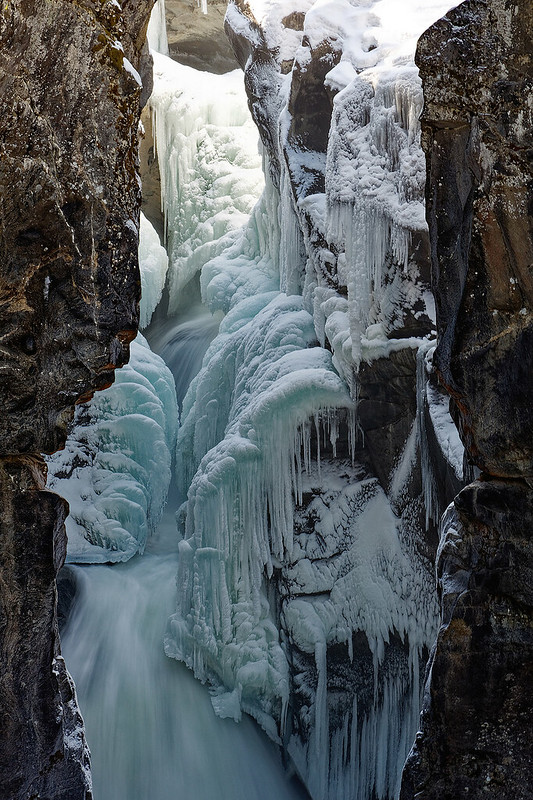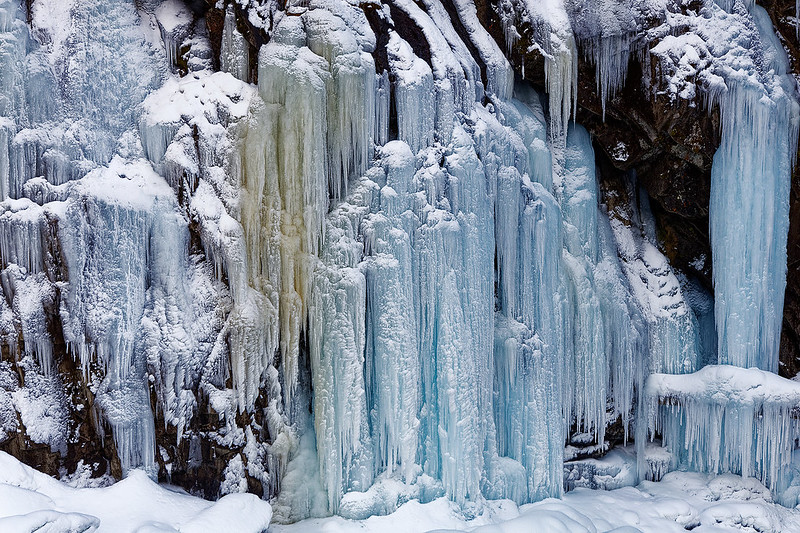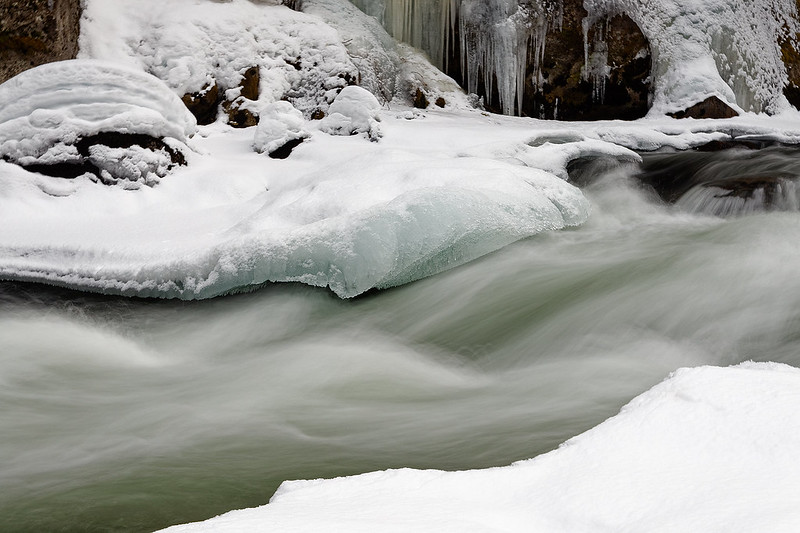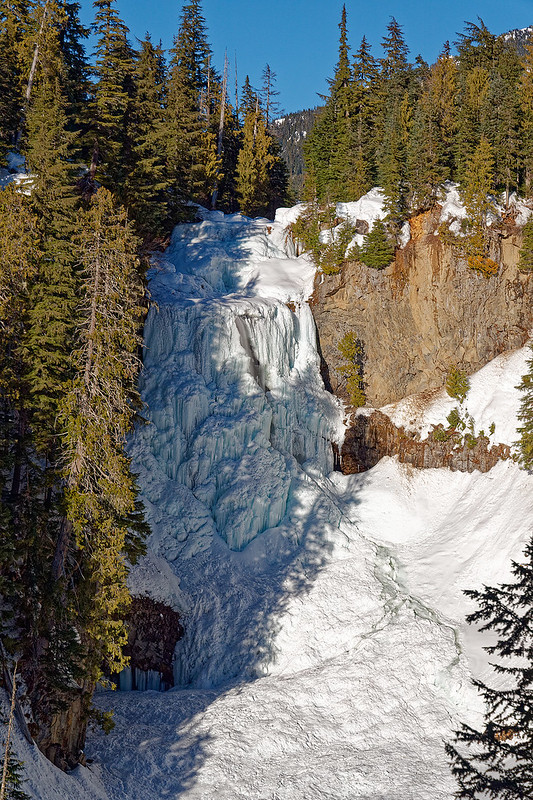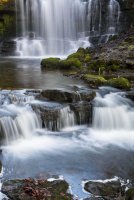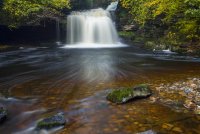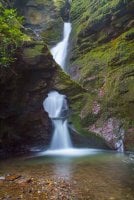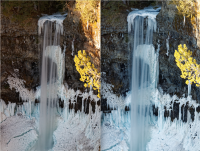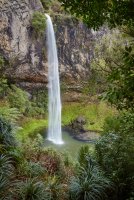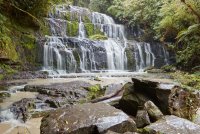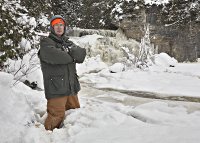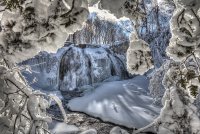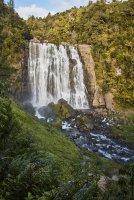L
Loswr
Guest
Thread for shots of waterfalls, please post yours!
I was at a scientific conference in Whistler, BC, Canada at the beginning of March, and took the opportunity to visit several waterfalls in the area, which were mostly frozen. It was a great opportunity to test out my newly-purchased EOS R and 24-105mm f/4L IS, which was the only camera/lens I brought on the trip. IMO, a 6-stop ND is ideal for waterfalls, but unfortunately I have only 3- and 10-stop NDs in 77mm (an oversight which I'll remedy at some point), so I sometimes had to bump up the ISO with the 10-stop to keep exposures in a reasonable range (<10 s).
I also came to appreciate the utility of the articulating screen. For my usual subjects (birds, architecture) it doesn't offer much benefit, but I did come across a specific use case where it was essential. All of the waterfalls I visited required snowshoes to reach, and although some had either viewing platforms or packed ice, at a couple of them I was standing on over 2 meters of powder. The best IS system won't allow exposures with a 10-stop ND, which means a tripod is necessary and a tripod requires a stable, firm surface...and deep powdery snow is neither. My improvised solution was to set the tripod up on my snowshoes (with me in them), but there was no way to get the camera to eye level or for me to contort down look through a VF or see a fixed rear LCD. The tilty-flippy was the only way to compose the shots.
The most scenic waterfall was Rainbow Falls, a 2km hike with about 100 m of elevation gain. I was able to go right up to the pool at the base of the falls, sometimes I was standing on ice over part of the pool (thankfully, thick ice).
(Seems I can't link an image to an external URL, so click the image titles for larger views.)
"Rainbow Falls"
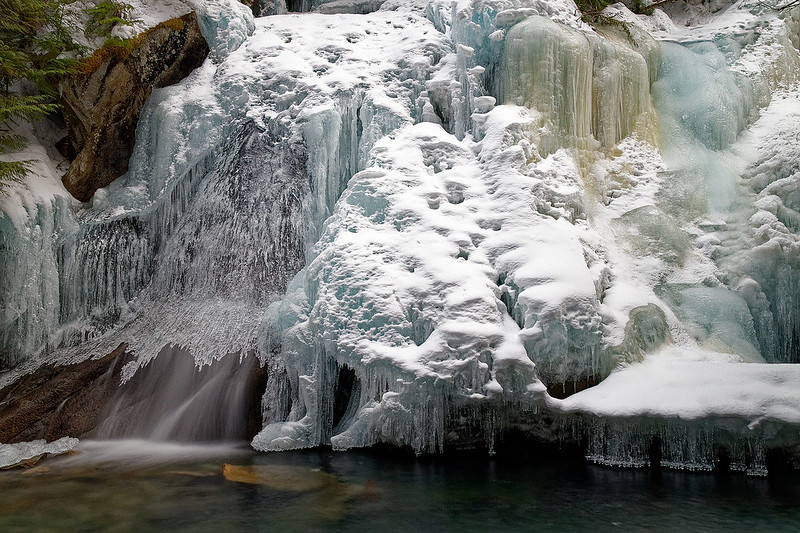
EOS R, RF 24-105mm f/4L IS USM @ 29mm, 4 s, f/9, ISO 640, 10-stop ND filter
"Rainbow Falls Closeup"
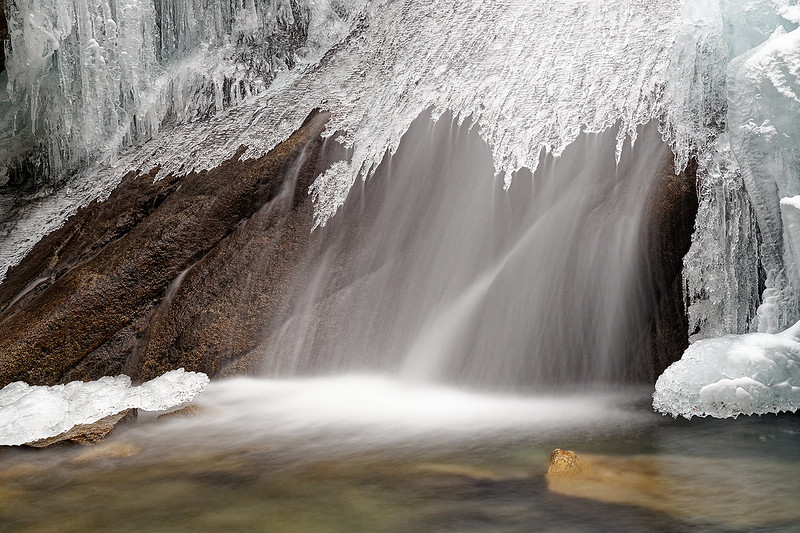
EOS R, RF 24-105mm f/4L IS USM @ 105mm, 4 s, f/6.3, ISO 640, 10-stop ND filter
I was at a scientific conference in Whistler, BC, Canada at the beginning of March, and took the opportunity to visit several waterfalls in the area, which were mostly frozen. It was a great opportunity to test out my newly-purchased EOS R and 24-105mm f/4L IS, which was the only camera/lens I brought on the trip. IMO, a 6-stop ND is ideal for waterfalls, but unfortunately I have only 3- and 10-stop NDs in 77mm (an oversight which I'll remedy at some point), so I sometimes had to bump up the ISO with the 10-stop to keep exposures in a reasonable range (<10 s).
I also came to appreciate the utility of the articulating screen. For my usual subjects (birds, architecture) it doesn't offer much benefit, but I did come across a specific use case where it was essential. All of the waterfalls I visited required snowshoes to reach, and although some had either viewing platforms or packed ice, at a couple of them I was standing on over 2 meters of powder. The best IS system won't allow exposures with a 10-stop ND, which means a tripod is necessary and a tripod requires a stable, firm surface...and deep powdery snow is neither. My improvised solution was to set the tripod up on my snowshoes (with me in them), but there was no way to get the camera to eye level or for me to contort down look through a VF or see a fixed rear LCD. The tilty-flippy was the only way to compose the shots.
The most scenic waterfall was Rainbow Falls, a 2km hike with about 100 m of elevation gain. I was able to go right up to the pool at the base of the falls, sometimes I was standing on ice over part of the pool (thankfully, thick ice).
(Seems I can't link an image to an external URL, so click the image titles for larger views.)
"Rainbow Falls"

EOS R, RF 24-105mm f/4L IS USM @ 29mm, 4 s, f/9, ISO 640, 10-stop ND filter
"Rainbow Falls Closeup"

EOS R, RF 24-105mm f/4L IS USM @ 105mm, 4 s, f/6.3, ISO 640, 10-stop ND filter

